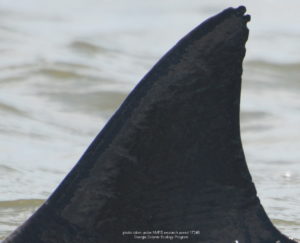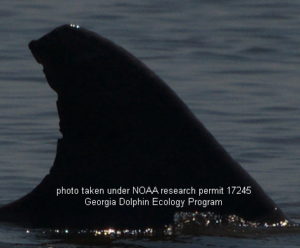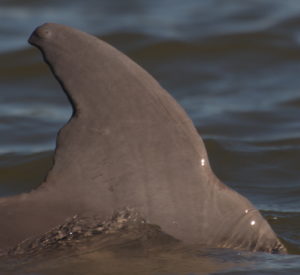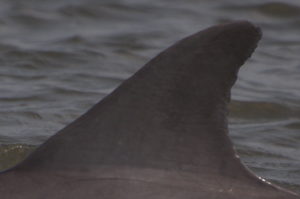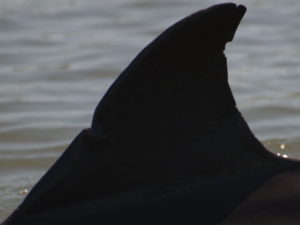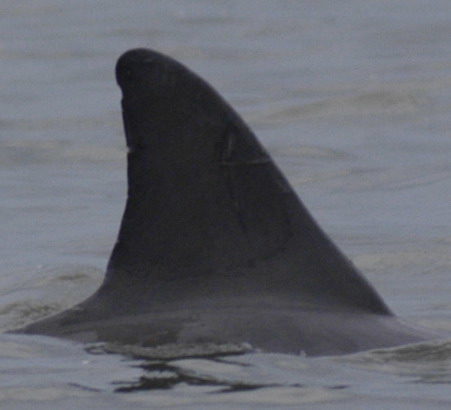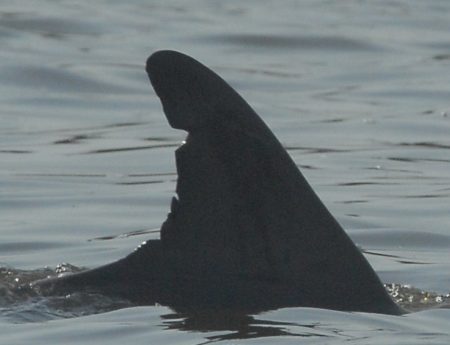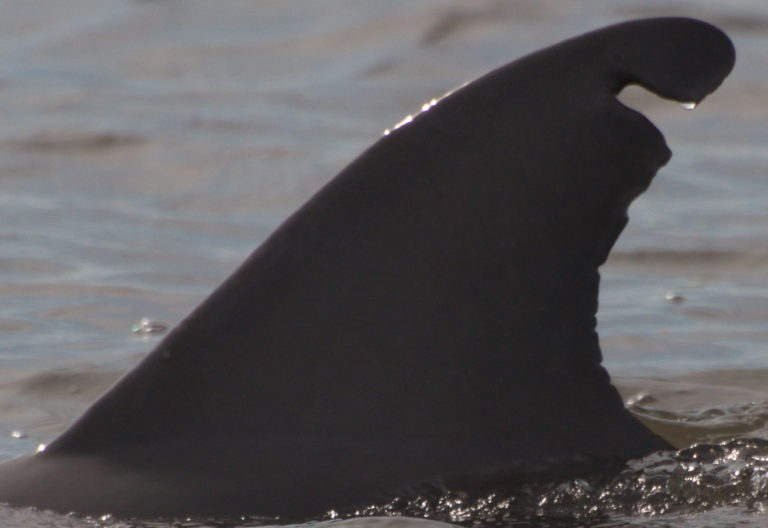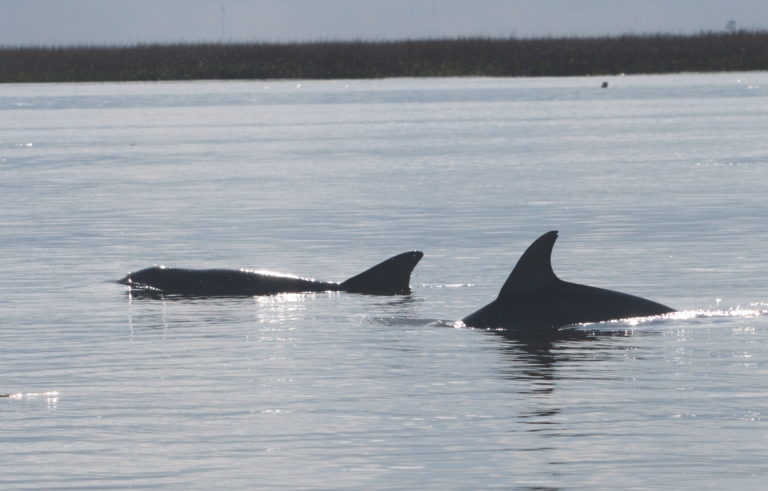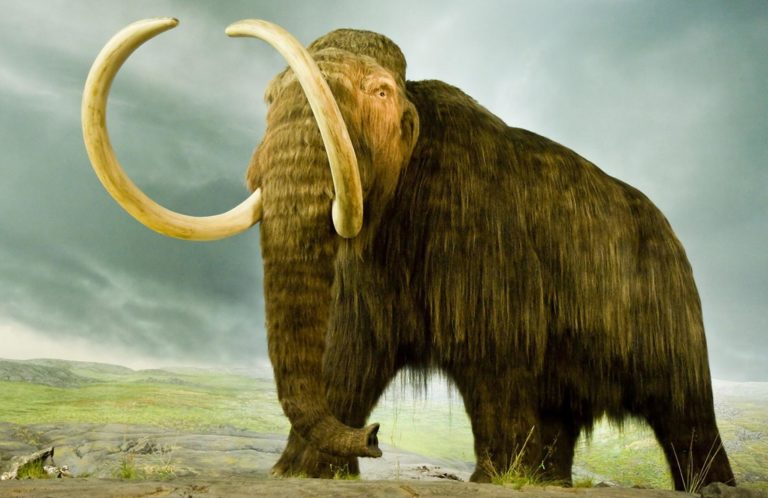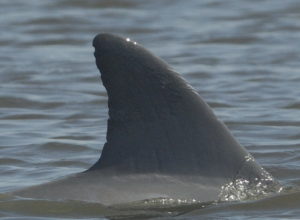
If you follow us on Facebook or Twitter, you may have noticed that we often mention dolphins by name. Have you ever wondered how we can tell which dolphin is which? Today, we’re going to give you a crash course on how to ID individual dolphins. Look at your fingertips. See those tiny swirls and swishes on each pad? As you probably know from crime shows or perhaps early schooling, your particular pattern is almost perfectly unique to you. Dolphins don’t have fingers, so obviously no fingerprints, but they happen to have an almost equally unique and identifiable characteristic that we can use to differentiate them: their dorsal fins.
Quick anatomy reminder: the dorsal fin is that roughly-triangular, upward-facing fin on the dolphins’ backs. You know, the one nervous swimmers are always mistaking for shark fins among the waves.
Moving on. What’s so special about these dorsal fins? How could they possibly let you distinguish one dolphin from another? Unlike when we get little cuts and scratches, dolphins’ dorsal fins don’t heal back to their original state when they get cut, torn, punctured, or abraded. Instead, the wound heals, but the fin shape is forever changed.
Some of these changes are drastic, like when a dolphin is struck by a boat’s propeller. Many of the alterations, however, are the result of interactions with other dolphins. Dolphins are very tactile animals; they love to nibble playfully (or not so playfully) on each other’s during social interactions. Another significant cause of injury are encounters with monofilament fishing line, crab trap ropes, and abandoned fishing nets. All of these factors shaping dolphins’ dorsals accumulate throughout their lifetime, and the combination gives rise to a completely one-of-a-kind fin.
GDEP’s research, and many other dolphin research projects, are based around this unique characteristic. When we go out on surveys, we attempt (dolphin willing) to capture each dolphin’s dorsal fin on camera. Some fins are so distinctive, such as Thelma or Spade, that we can reliably identify dolphins in the moment as they swim by. Many others, however, have very subtle and sometimes similar markings, which we must carefully compare to past photographs of other fins until we find a perfect match. By matching the photographs of fins to photos from previous survey sightings, we start to form a picture of that dolphin’s life, i.e., how old they are, if they’ve reproduced, where they mainly live and feed, which other dolphins they interact with, and more.
We have quite a few terms that help us categorize fin features—let’s talk about some of the most important and most common ones. First, we have to establish the different areas of the fin where these features can appear. We subdivide the dorsal fin into 6 key areas, shown in the diagram below.
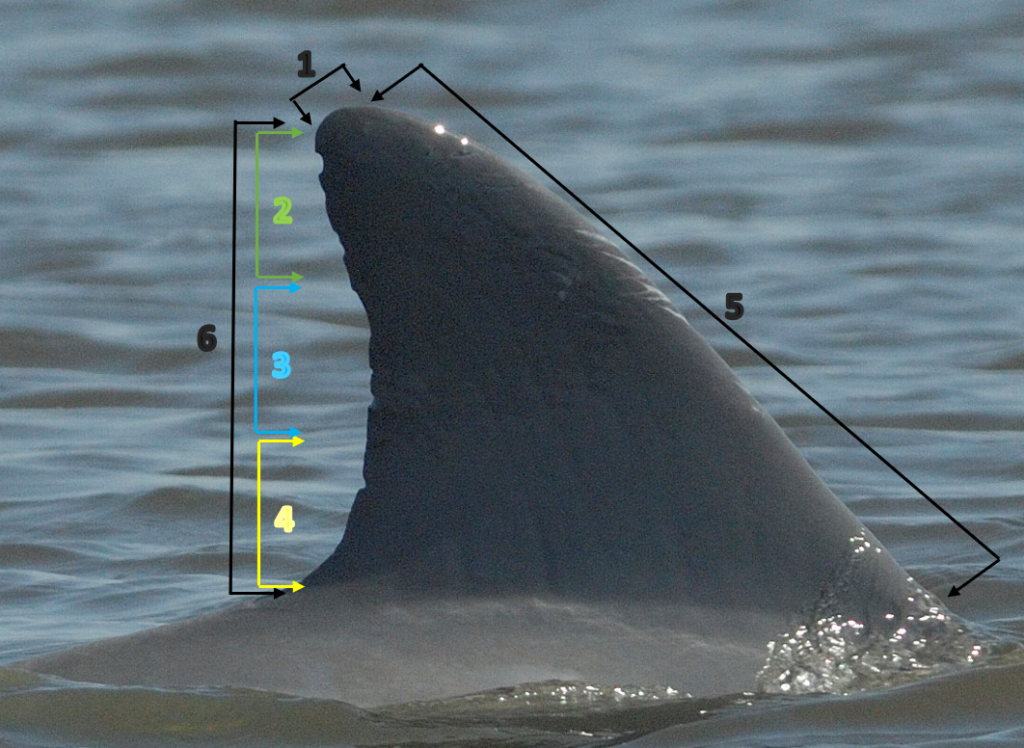
The fin is divided horizontally into thirds so that we may specify where features occur on the fin. We refer to these areas as upper, middle, and lower fin. The vertical sides of the fin, facing toward the dolphin’s head or tail, are called the leading and trailing edges, respectively. Finally, the very tip of the fin is called the apex, and any features occurring along that curved tip are noted specifically as apex features, rather than simply in the upper fin area.
Using some combination of these six characteristics, we can start to classify and identify the dolphins we see.
Now let’s look at some of the different features you might see within these areas. The most common feature we characterize is called a notch. A notch is any kind of cutout or indentation along the edge of the dorsal fin. These notches can range from barely visible to dramatic.
The particular size, angle, placement, and pattern of notches on a dorsal fin are the keys to distinguishing one dolphin from another.
One of the most dramatic features we see is called a chop fin. These are often the result of boating accidents, in which some portion of the fin is entirely cut off.

Did you know there’s a fin feature named after a classic Italian dish? Lasagna on a dolphin fin is used to describe a wavy warping of the trailing edge of the dorsal fin that looks like the wave of a lasagna noodle. No one really knows how lasagna occurs on dorsal fins, though some suspect it is due to lack of collagen in the fin to keep it stiff in those areas.
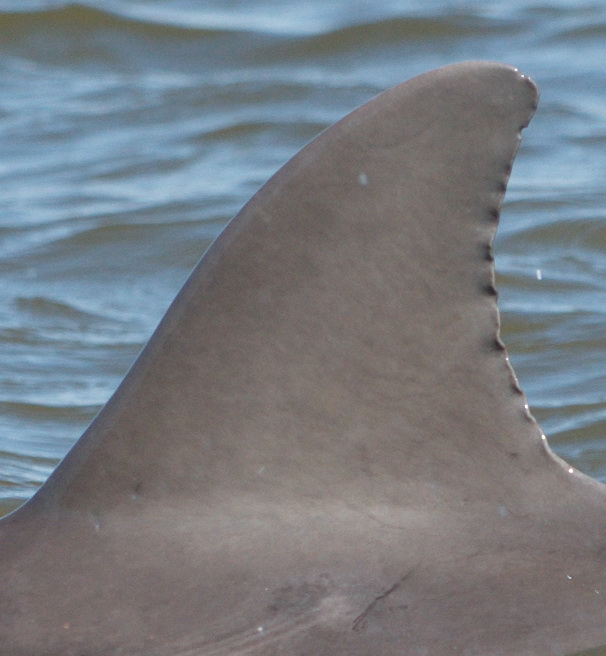
Now that you have basic training in fin features, try flipping through these dorsal fins and identifying the characteristics you see!

